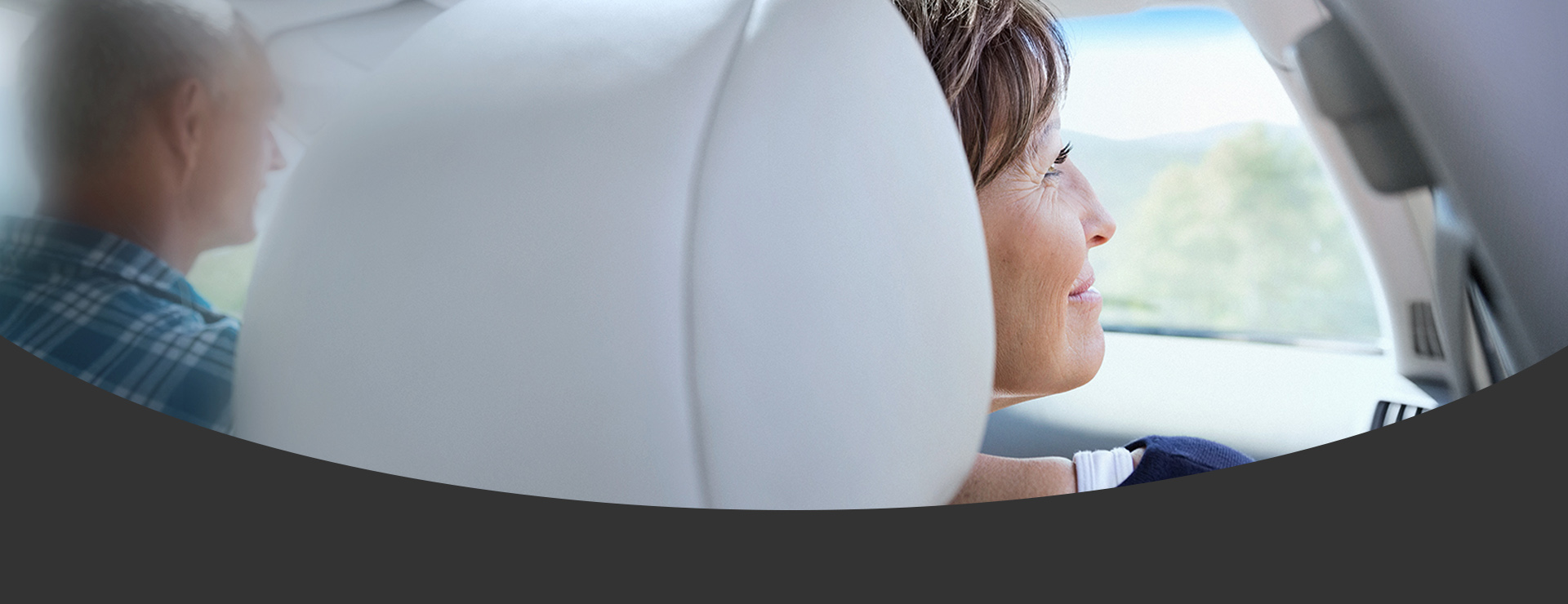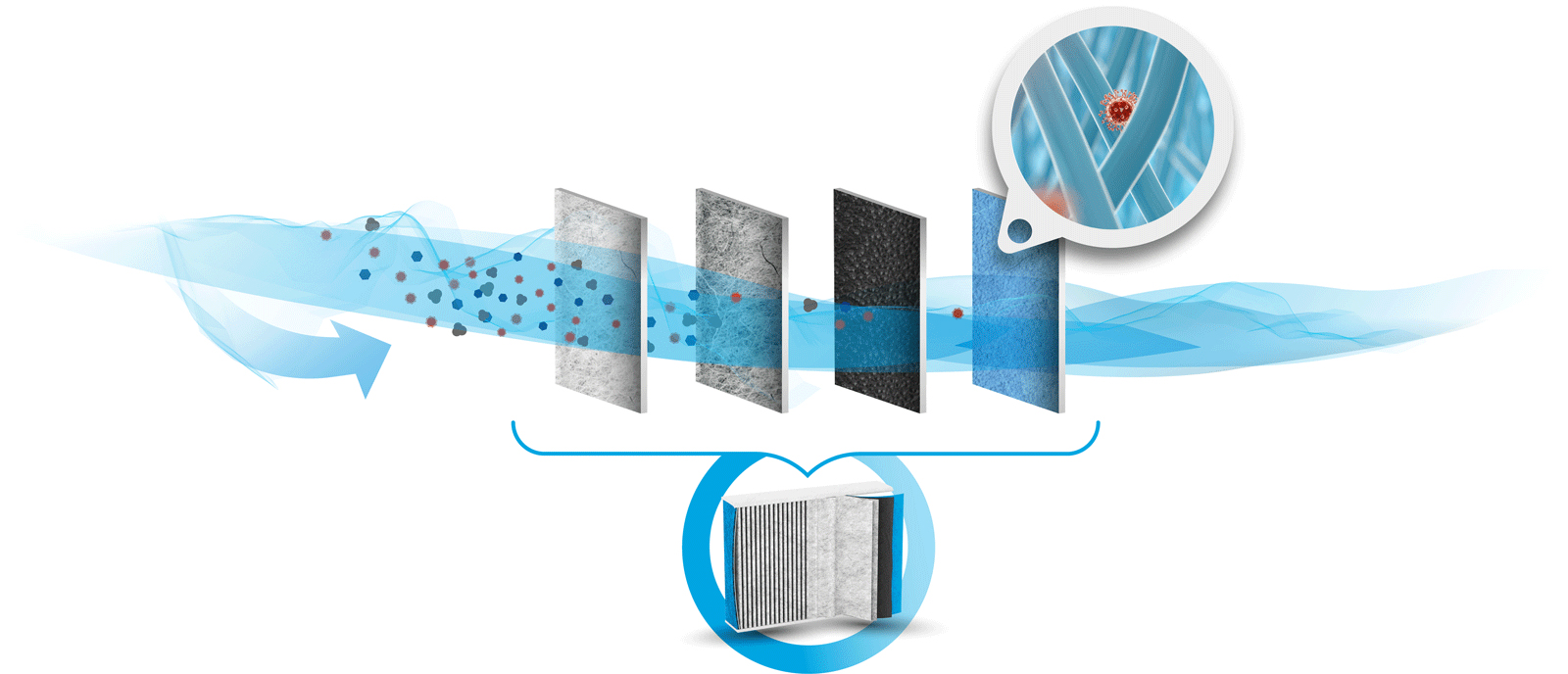
Efficiently reducing indoor viral load
Becoming infected by a virus indoors depends heavily on exposure to air with a high viral load. In other words, the air you breathe externally is directly related to contracting viruses internally. During the SARS-CoV-2 pandemic, this topic has become more relevant than ever.
Depending on the technologies incorporated, filters can effectively remove several variants of viruses and aerosols from the air. In addition to our work in manufacturing high-performance facemasks worldwide, Freudenberg is helping to reduce the risk of infection with efficient high-tech filtration solutions and new engineering services related to indoor and vehicle air quality.
Effective risk reduction
As they hang in the air and move around indoor spaces, aerosols can become a source of infection. It is impossible to see them with the naked eye, yet they are full of microscopic particles that can be loaded with viruses. Reducing the intensity of this load is vital in limiting infection potential. Dr. Thomas Caesar, Director Global Filtration Technology Industrial Filtration, explains: “Effective state-of-the-art ventilation systems equipped with the right filtration solution are fundamentally suited to reducing the viral load.”
In pharmaceutical cleanrooms or hospitals, for example, Freudenberg’s filtration systems use high-performance particulate filters to capture almost 100 % of viruses, including SARS-CoV-2. In response to the current pandemic, Freudenberg has also expanded its “Viledon filterCair” air quality management service with the addition of two hygiene modules, which have been specifically designed to work against pathogens and viruses. Both are mainly used in the food and beverage industry.
The two new modules include a comprehensive ventilation system check carried out by expert service technicians. The process involves taking samples from surfaces and running a series of microbiological tests. One of the new modules also includes a thorough hygiene inspection of the entire air conditioning system, in accordance with relevant guidelines issued by the Association of German Engineers (VDI 6022).

Localized treatment options

Whether deployed at home or to support an existing HVAC system at work, mobile air purifiers can be used to provide an ongoing reduction of virus concentration in the ambient air. This is why Freudenberg experts recommend the use of high-quality devices with appropriate filtration efficiency to supplement ventilation provided by a building’s air conditioning system or window ventilation with purified fresh air.
In choosing an appropriate device, you need to ensure that the volume flow per hour of any mobile equipment is at least six times the volume of the room. Your air purifier will also need powerful, high-performance filters that capture droplets emitted when breathing, speaking, singing or coughing. Ventilation technology can be freely and safely used to complement other potentially protective measures.
Staying safe on the road
Outside the home or office, one risk of viral infection can come from the vehicles we travel in.
Any closed space where people gather is subject to aerosol distribution and airborne viral contamination. Freudenberg offers a comprehensive range of filtration solutions for these applications, including private cars, buses and trams, and even agricultural vehicles.
The key to reducing infection risk is to increase the supply of filtered fresh air. To achieve this effectively, the air exchange rate and the quality of the filters themselves are crucial. For example, if you are operating your car’s ventilation system in recirculation mode, the filters are all that stand between you and viral aerosols.

Powerful protection
In the automotive filtration segment, our flagship product is the micronAir proTect line cabin air filter. This innovative solution has been proven to remove around 90 % of viral aerosols, vastly reducing viral load. Numerous car manufacturers have already adopted the new system.
Within this multi-layer filter, the first two layers capture most of the ultrafine aerosols, while an optional third layer traps harmful gases. An additional layer with functional ingredients based on fruit extracts inactivates almost 100 % of the detected viral load, actively preventing the release of active viruses back into the cabin air as a result of vehicle vibration. Its functionality has been scientifically demonstrated in a series of comprehensive tests carried out in cooperation with independent external research institutes.
 automotive filtration insight
automotive filtration insight